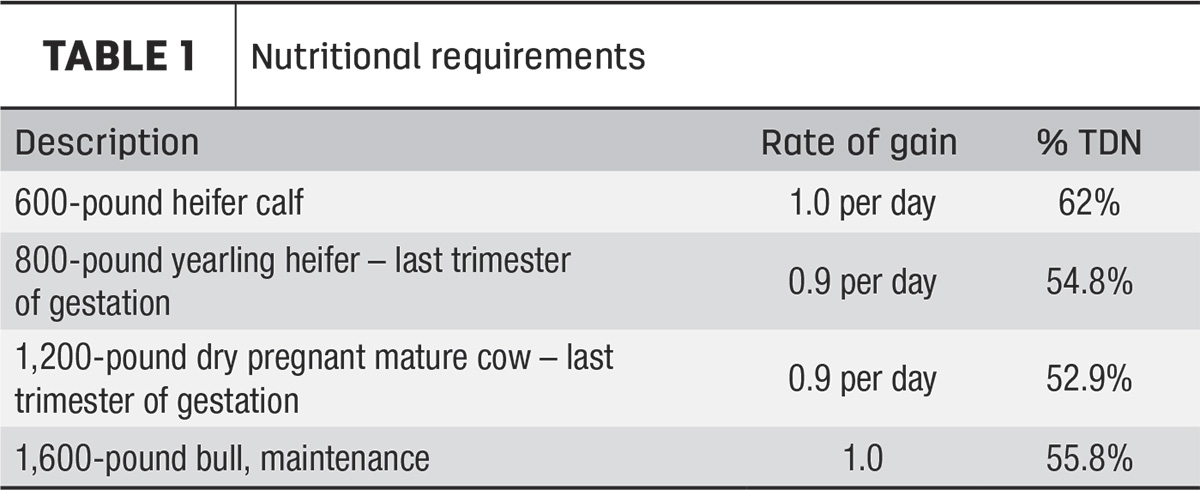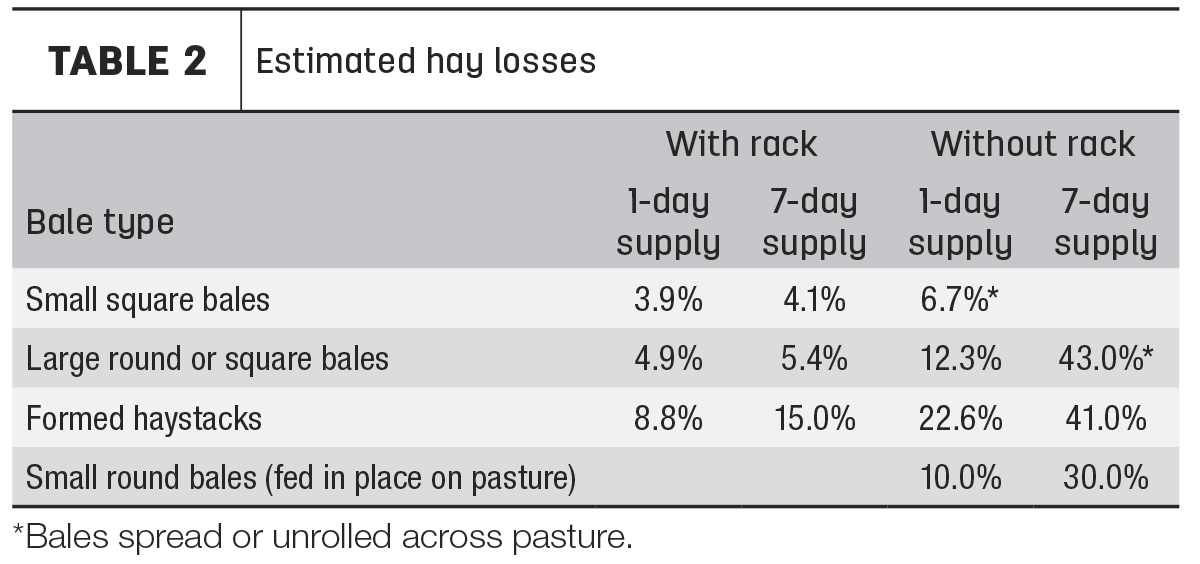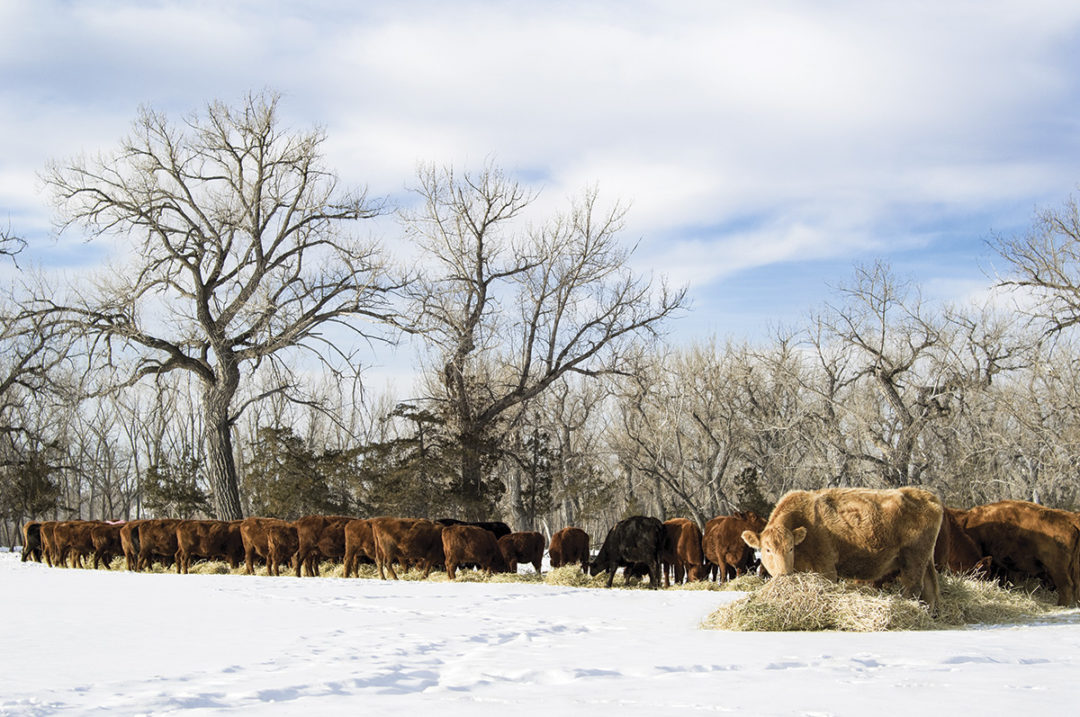If you are feeding livestock, you know the price of hay has gone up. Even if you raise your own hay, the cost to produce that hay has increased. More than ever, it is important not to waste that hay. No one can afford that.
Hay is a crop with diminishing quantity and quality. From the time the swather enters the field until it is fed to a cow, losses occur both in quantity and quality. Timing the cutting so hay quality meets or exceeds the nutritional requirements of the animals we are going to feed it to is important. The more mature the plants are, the lower the nutritional value but the higher the quantity. For example, brome in early boot is 63% total digestible nutrient (TDN); at full bloom, it has dropped to 48% TDN. It is a balancing act between the amount of nutrients and quantity produced.
Raking hay causes a reduction in quantity by causing leaf loss. In fact, raking dry alfalfa causes more leaf loss than any other harvest practice. You want to swath when the soil is dry. Hay that dries slowly may lose as much as 15% dry matter due to respiration. Hay that dries quickly only loses 2% to 6%. There is loss in the field during the baling process. Small rectangular balers lose 1% to 5% of alfalfa hay. Large round baler losses can be between 3% and 30%. How much hay is lost to baler pickup is influenced by field speed, size of windrow, hay moisture content and mechanical condition. These losses can range as high as 12%.
Three-step process
When it is time to feed hay, there are three steps you can take to reduce waste. Step 1 of not wasting hay is to know the nutritional requirements of the animal you are feeding. Table 1 shows the amount of TDNs cattle need at various stages of age and production.

Step 2 is knowing the nutrients in the hay you have. There are some standard tables that show the amount of nutrients by species of forage. Some tables include the maturity of the plant, and some do not. The more mature a plant is, the lower the feed value, but there will be increased tonnage. The only way to know the nutrients of your feed is to send off a sample. The cost is around $35 for a full analysis and takes about 10 days to get results. Most extension offices can assist with this.
Step 3 is to compare your animals' needs to what you have available and put together a ration to meet those needs, making the best use of your forage resources. You will want to feed your hay with a higher nutritional content to your developing heifers, first-calf heifers and those cows that need to move up a body condition score. You can feed your lower-quality feed to those cows that are in good shape or farther from calving. If you have hay that has more nutrients than what your herd needs, is there an opportunity to sell it, purchase different hay and possibly make some money? As you run the numbers, maybe there is opportunity to feed less of the high-nutrient hay, still meet the cows' nutritional requirements and supplement with a “filler” that is less expensive, so they don’t bawl every time the feed truck drives by.
Storage and feeding
Consider how you store your hay to prevent losses. You should store bales in a well-drained location so the bottom of the bale doesn’t become spoiled. The storage site should drain in all directions so the hay isn’t in a mud puddle. A coarse rock base will help minimize spoilage on the bottom of the bales. Do not store hay near trees that will collect additional moisture or where drying is impaired. Store big bales end to end. If possible, cover your hay so it does not absorb moisture. Some storage studies have shown losses can range between 5% and 35% depending on amount of precipitation, storage site location and original condition of the bale.
Cattle will waste hay; that is just a given. But you can do a few things to help minimize that waste. Feed animals daily rather than “throwing” them a bale and replacing it when it is gone. Cattle utilize hay better when hay is limited. When a cow has free access to hay, you will need 25% more hay.
If you do feed one large bale at a time, consider putting it in some type of feeder to reduce waste. The rack or “hay ring” reduces the amount of waste substantially. There have been numerous studies done looking at wasted hay and different feeding methods. The University of Missouri Extension put together Table 2 with estimated losses (percentage of hay offered) from different feeding methods.

If you do feed directly on the ground, only feed what they will clean up in less than 24 hours. Roll the hay out on frozen ground. Your feeding area should also be well drained and, if possible, concrete. The hay animals don’t consume becomes bedding or is tromped into the ground and wasted. If you run the numbers and figure you need 5 tons of hay to get through winter and you add in the waste factor of 10%, you now need to have an extra half ton of hay.
Feed hay that your cattle will eat. Consider the quality of each of the haystacks. Cows that are given high-quality hay early in the season are going to waste more of the low-quality hay fed later in the same season.
Remember, you do have to be practical and consider the goals, facilities and available help for your operation. Large bale systems minimize labor, but not hay waste. Feeding a one-day supply reduces waste but increases labor and fuel costs. As you consider racks, they reduce hay waste, but there is the initial investment in the hay rack. Most hay racks have enough space for 10 head at a time, so with a larger herd, you are looking at increased investment.
Many ranching operations unroll a bale or utilize a bale processor. These methods result in high trampling and soiling losses if too much is fed at one time. Hay waste as high as 40% can be expected if three days’ worth of hay is fed at one time. If only one day’s worth is fed, losses are reduced to 12%. One advantage to this method is that the feeding area can be moved on a regular basis, spreading nutrients and manure over large areas.
So, as the price of hay to purchase or produce increases, it may pay to take a look at the nutrient content of your feed, your storage area and feeding practices, and consider making some changes.







